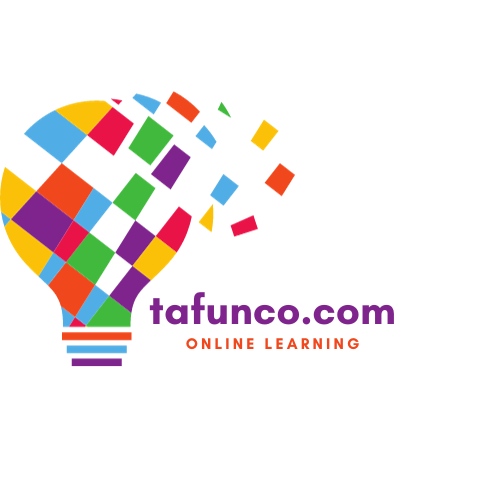The explosive growth of online learning has significantly changed the educational environment in recent years. Online learning has changed from being seen as a cutting-edge strategy to being a commonplace and essential part of the educational landscape. This thorough analysis looks at the many aspects of online learning, including its beginnings, development, benefits, drawbacks, and effects on students, teachers, and educational institutions throughout the globe.

Beginnings & Development:
The idea of computer-based learning first surfaced in the 1960s, which is when online education first gained traction. On the other hand, the broad acceptance of online learning was made possible by the development of the internet in the 1990s. Early efforts concentrated on offering distant learning to learners who were located far away, but as high-speed internet has become more widely available and technology has advanced, online learning has become more dynamic and participatory.
Development and Availability:
Millions of students worldwide are now enrolled in virtual classrooms as a result of the exponential rise in online learning. Online course accessibility has democratized education by removing obstacles to learning, including geographical ones, and giving those who would not have had access to conventional forms of education opportunity to study. Those with additional time restrictions, working professionals, and parents have benefited most from this inclusion.
Benefits of Distance Learning
The popularity of online education may be attributed to its many benefits. Schedule flexibility enables students to reconcile their studies with personal or professional obligations. Mobility and convenience are improved when course materials are accessible from any location. Furthermore, self-paced learning environments that accommodate various learning styles are often offered by online education. The variety of interactive platforms, real-time feedback, and multimedia materials further enhance the learning process.
Problems and Solutions:
Online learning has difficulties even with all of its advantages. The possibility of isolation and the absence of in-person connection present challenges for some students. Certain people may find access difficult due to technological problems and the digital divide. Furthermore, questions have been raised about the quality of online learning and the possibility of cheating. With a dedication to upholding high educational standards, enhanced technology, and creative pedagogical techniques, institutions and educators are constantly tackling these issues.
Effects on Conventional Organizations:
Traditional educational institutions have been forced to adjust and include digital learning into their programs due to the growth of online education. Nowadays, a lot of schools and universities offer a combination of online and in-person courses, developing a hybrid model that meets the demands of a wide range of students. This change has compelled academic institutions to reevaluate their approaches to instruction, make technological investments, and reevaluate the function of physical campuses.
Online Education’s Future:
With continuous technical developments and a worldwide movement towards digital connection, online education is only going to become better. Virtual reality, augmented reality, and artificial intelligence have the potential to significantly improve the online learning environment. Personalized learning routes, adaptive tests, and collaborative virtual settings might all become commonplace in the future and completely change how education is received and experienced.
Skill Development and Lifelong Learning:
The ability of online learning to promote a culture of lifelong learning is one of its long-lasting effects. Access to an extensive range of courses and materials at every stage of life empowers people to remain relevant in a work market that is changing quickly and to continuously improve their abilities. Online learning environments, which often include micro-credentials and specialized courses, are becoming essential for professional growth because they enable students to gain specialized skills that meet changing market needs.
Cross-cultural Cooperation and Exchange:
The internet’s worldwide reach has made it possible for previously unheard-of levels of international cooperation in education. Students from a variety of backgrounds may participate in virtual classrooms using online platforms, which promotes cross-cultural learning and enhances the educational process. Global webinars, discussion boards, and cooperative projects provide a dynamic learning environment that cuts across national borders. In addition to fostering understanding, this connection gets students ready for a job that is more worldwide.

Innovation and Entrepreneurship in Education:
Innovative methods of teaching and learning as well as business possibilities have been sparked by the growth of online education. EdTech companies have exploded, providing platforms for virtual classrooms, educational applications, and online courses. A culture of innovation in education technology has emerged as a result of this upsurge in entrepreneurial activity, pushing the envelope in terms of immersive educational experiences, adaptive assessments, and individualized learning.
Bridging the Digital Gap:
Online learning has increased accessibility to education for many people, but it has also brought attention to the digital divide. Not all people have equal access to gadgets, high-speed internet, or the digital literacy needed for successful online learning. Addressing these differences and making sure that everyone may benefit from online education will be the task going ahead. A more equal educational environment depends on initiatives like technology literacy programs and community internet access projects that try to close the digital gap.
Education and Personalization Driven by Data:
A more sophisticated knowledge of how students learn is made possible by the abundance of data produced by online learning systems. By taking into account each learner’s unique learning preferences and styles, tailored learning experiences may be created with the help of this data analysis. More and more, artificial intelligence and machine learning algorithms are being used to provide customized advice, comments, and interventions, resulting in an ecosystem of education that is more responsive and adaptable.
Changing Teaching Methodologies and Pedagogies:
In addition to changing how students learn, online education has forced educators to reassess their approaches to instruction. Teachers are looking at new and creative ways to get kids involved in virtual settings. Online courses are increasingly including gamified learning, virtual laboratories, and interactive simulations. While synchronous sessions allow for real-time engagement, conversations, and collaborative projects, asynchronous learning gives students the freedom to study materials at their own speed. An more dynamic and interesting educational experience is being promoted by this progression in pedagogies.
Ongoing Evaluation and Input:
Continuous evaluation and real-time feedback are made possible by online learning, giving teachers and students a more complete picture of their progress. Using data analytics, adaptive learning solutions monitor each user’s performance and modify task difficulty as necessary. By assisting students in recognizing and addressing their areas of weakness, this tailored feedback loop fosters a better comprehension of the material. A more comprehensive and student-centered approach to education is facilitated by the preference for continuous assessment over conventional exam-based evaluation.
Sustainability of the Environment:
The growth of online learning is consistent with a larger worldwide trend toward sustainability. Because conventional education places a strong focus on physical infrastructure and transportation, it has a significant carbon footprint. On the other hand, via decreasing the need for transportation and maximizing resource consumption, online learning lessens its effect on the environment. Education will be more sustainable in the future as more institutions embrace online or hybrid methods.
Including Emerging Technologies in Integration:
With the incorporation of developing technology, online education has a bright future ahead of it. Immersive and interactive simulations are made possible by the growing integration of virtual reality (VR) and augmented reality (AR) into educational experiences. Because these technologies provide genuine, hands-on experiences in virtual worlds, they have the potential to change professions like engineering, the arts, and medical training.
Open Educational Resources’ (OER) Function:
The expansion of online education has been greatly aided by the availability of Open Educational Resources. OER has democratized access to high-quality educational resources by making textbooks, lectures, and multimedia resources freely available. In addition to saving money for students, this open approach to material has promoted collaborative content production and sharing among instructors worldwide.
Difficulties and Ethical Issues:
It is imperative to address the difficulties and moral issues raised by online learning as it continues to grow in popularity. A close examination of privacy issues, data security, and the appropriate use of learner data is necessary. Establishments need to put a high priority on building strong cybersecurity defenses and following moral standards in order to safeguard students’ and teachers’ private data.
Furthermore, there are difficulties with online evaluation because of the possibility of academic dishonesty, including plagiarism and cheating. The creation of innovative, application-based assessments that discourage rote memorization and the deployment of efficient proctoring systems are necessary to guarantee the integrity of online tests and assignments.
Learning Social and Emotional Skills:

The idea that online learning has an adverse effect on social and emotional learning is one of its main complaints. In a traditional classroom, students may engage in social interaction, teamwork, and the development of critical interpersonal skills. Even while it creates virtual communities, online learning may not be able to perfectly capture the depth of in-person interactions. In order to emphasize empathy, communication, and cooperation in virtual environments, educators are investigating methods to include social and emotional learning into online courses.
Educator Professional Development:
Teachers need to continue developing professionally as a result of the change to online learning. In order to successfully traverse the digital world, many instructors have had to quickly adapt to new technology and teaching approaches. As a result, they need help and training. Putting money into professional development programs guarantees that teachers have the abilities and know-how required to provide excellent online training, which eventually improves the educational experience for students.
Filling the Vapor Between Traditional and Online Education:
Even if online learning has advanced significantly, a comprehensive strategy that combines online and conventional learning is essential. Hybrid models provide a well-rounded educational experience by merging the benefits of online and in-person learning. Academic institutions are now investigating methods for facilitating smooth transitions between on-site and online learning settings, realizing that a multifaceted strategy may meet the diverse demands and preferences of learners.
Accessibility and Inclusive Design:
It is crucial to make sure that all students, including those with impairments, can access online education. Promoting inclusion is facilitated by building platforms and courses with accessible features like screen readers, closed captioning, and other content formats. Organizations are striving to use universal design principles in order to develop educational programs that can adapt to the many learning styles, aptitudes, and backgrounds of their students.
In summary:
The growth of online learning signifies a paradigm change in how people learn new information and abilities. From its modest origins to its present position as a mainstay of contemporary education, online learning has shown its worth in fostering flexibility, accessibility, and creativity. Future developments in technology should bring up even more fascinating opportunities for online learning, cementing its place as a fundamental component of the educational system for next generations.



